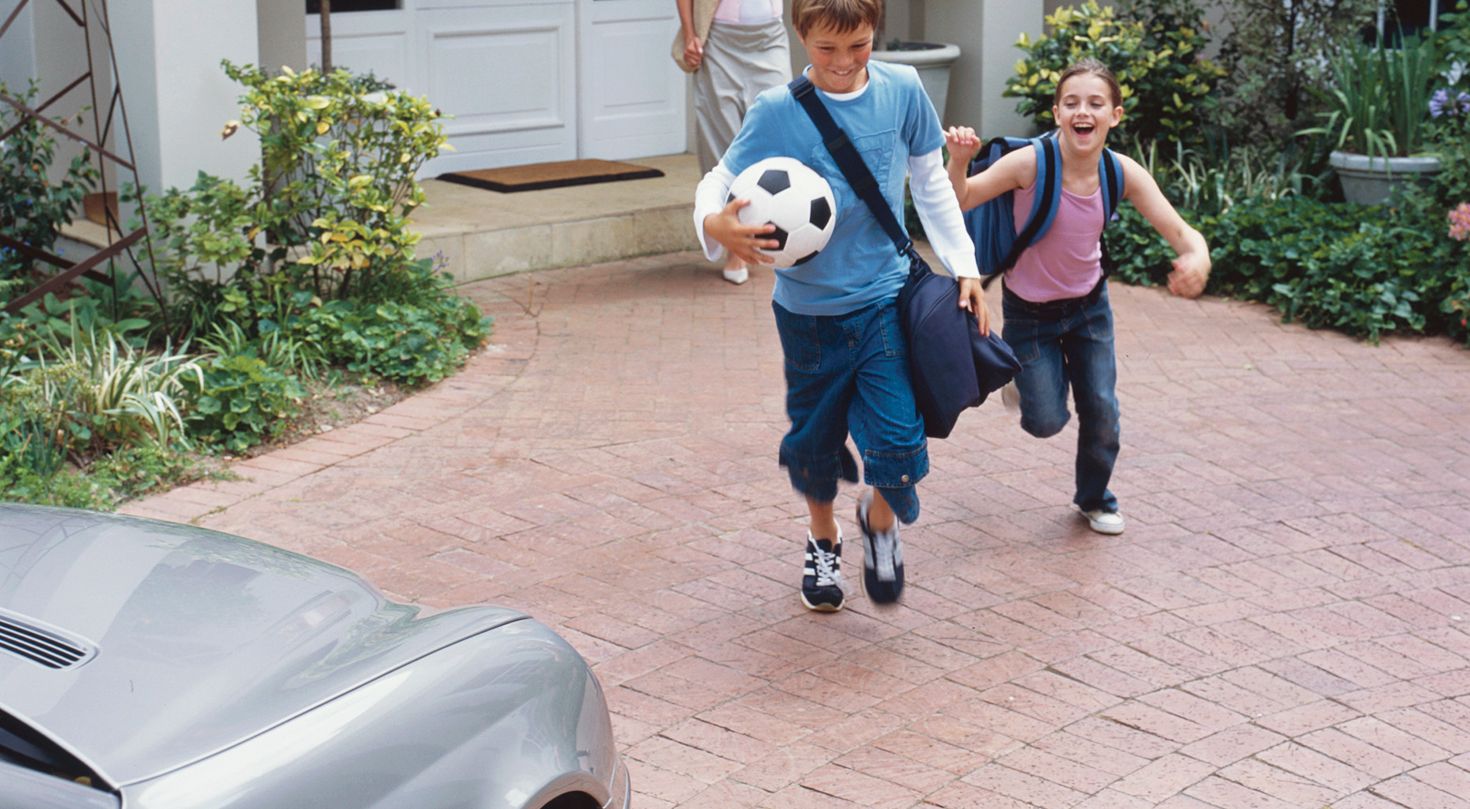There’s a concrete paver style for every home, from traditional brick-like patterns to Old World stone to modern, sleek shapes. We’ll introduce some common paver styles, textures, and colors and give some advice for buying the perfect pavers.
Concrete Paver Options
Which type of paver you should use often depends on your space’s purpose and surroundings. For a contemporary or modern home, sleek, smooth pavers with clean lines and minimalist designs can enhance the sleek, uncluttered look. In contrast, rustic or traditional styles benefit from textured or aged pavers that mimic the appearance of natural stone or cobblestone, adding charm and character. What’s important is matching styles and choosing the right size and quantity of pavers. The looks in this section may work well for your home, but you can tweak them to better suit your needs and goals.
Cool Pool Surround
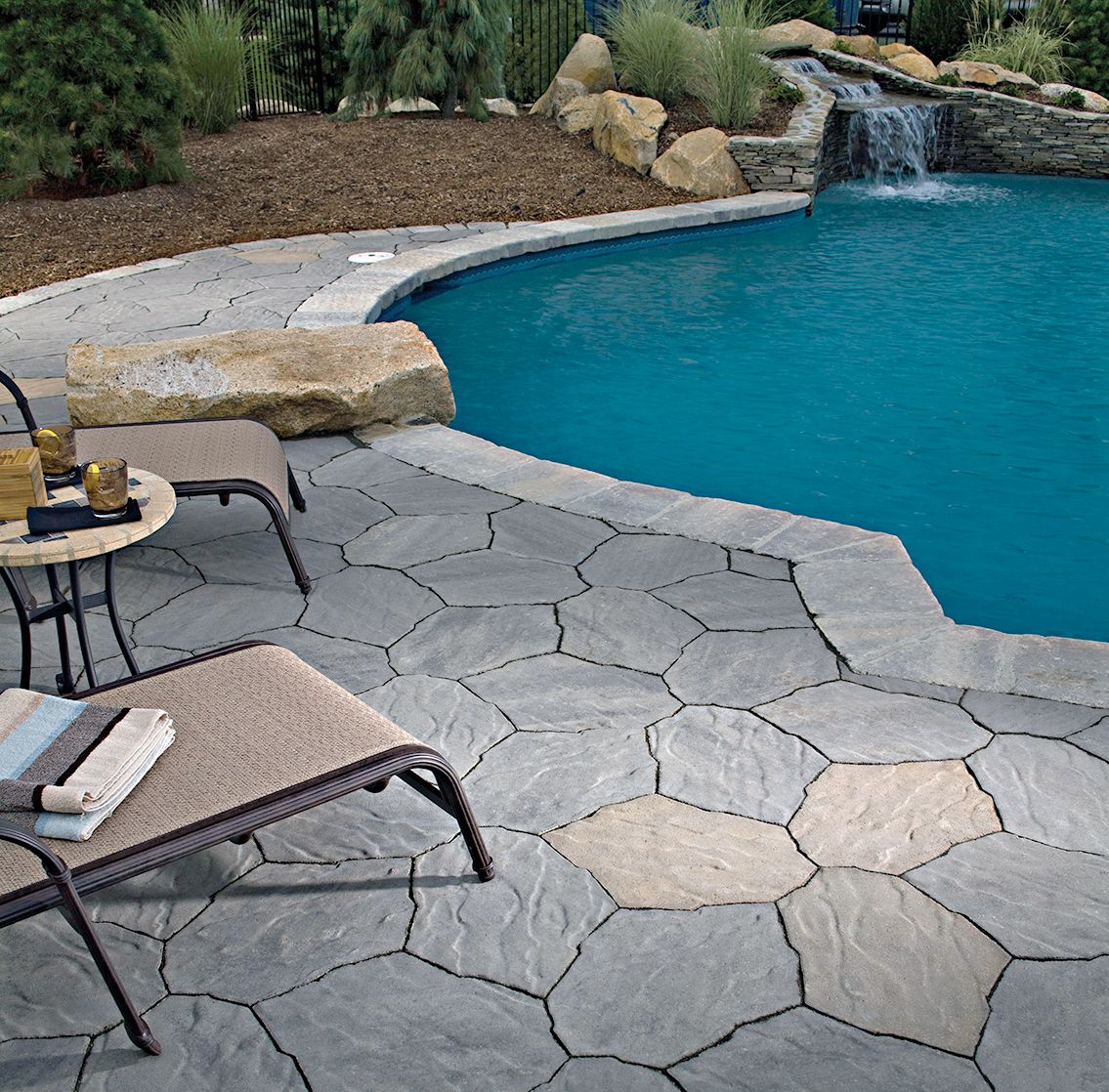
Pavers for a pool should balance style with safety. The pavers in this design have irregular shapes and textures that mimic the look of real stone. They’re resistant to chlorine and other pool chemicals and require minimal upkeep. A special textured surface also makes them less slippery than stone.
“Brick” Driveway
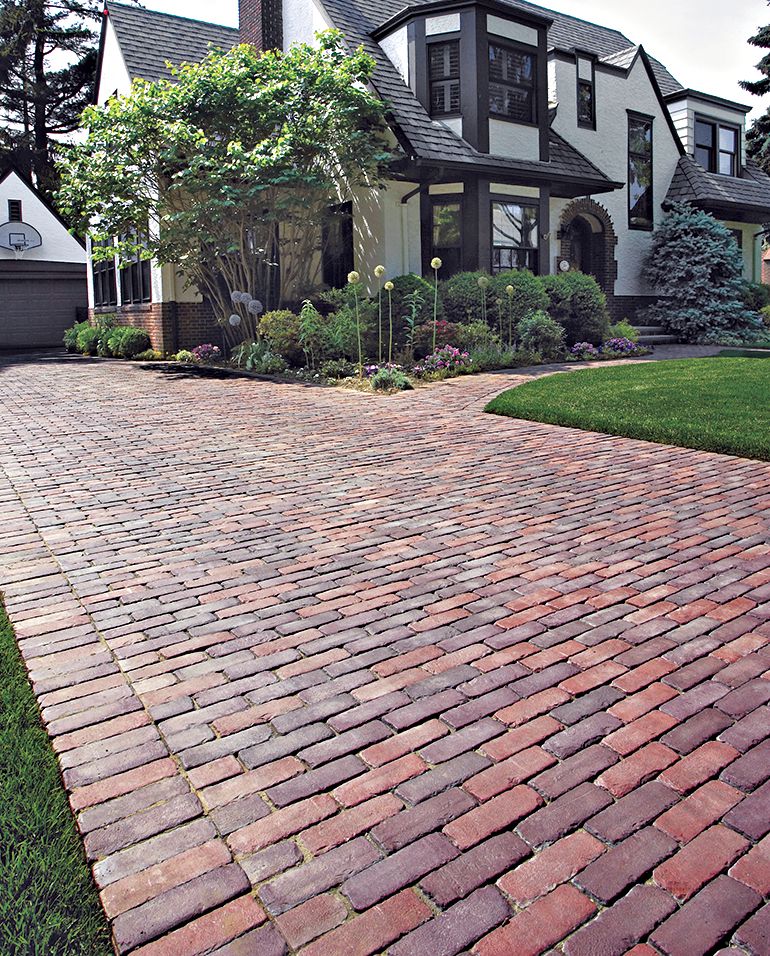
The deep red hue and “worn” edges of brick-style pavers can give your historic home a timeless-looking driveway. These pavers are more resistant to cracking and shifting than actual brick, but if one gets damaged, you don’t have to disturb the entire driveway surface.
Old-World Patio
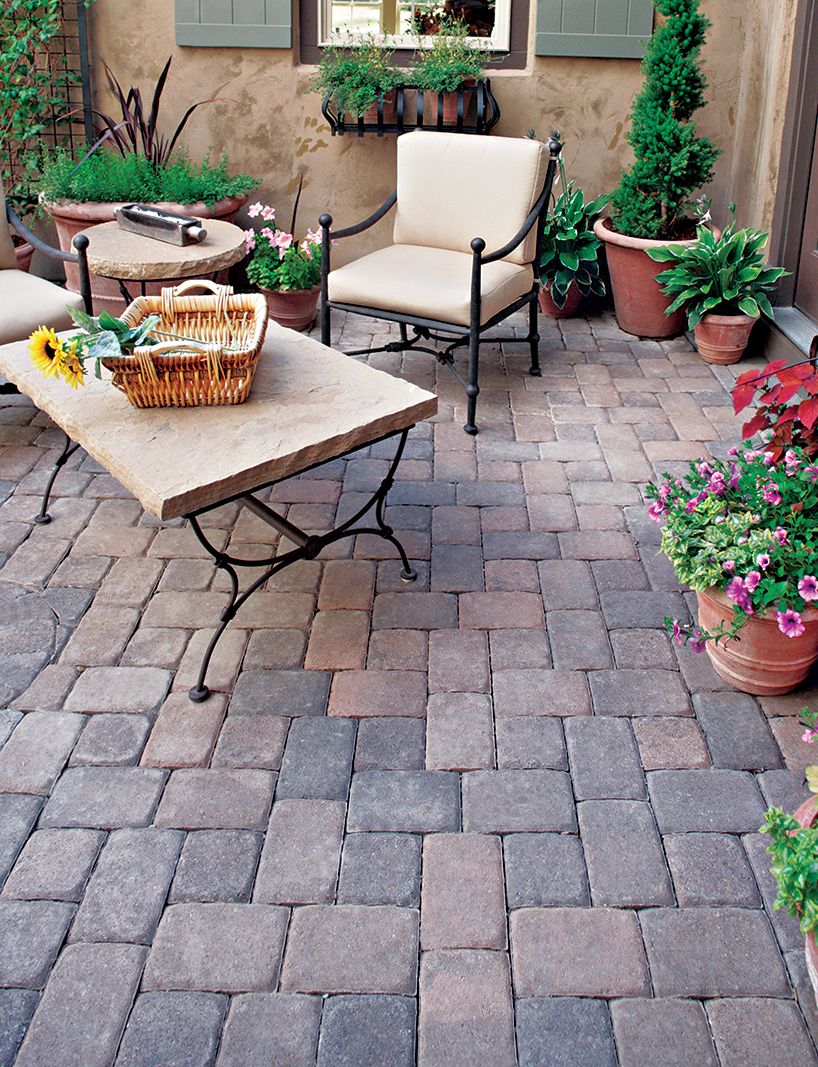
Tumbled pavers are a good option for rustic Mediterranean-inspired patios and European-style courtyards. They’re also perfect for continuing the Old World stucco and adobe house theme.
The design shown here has a cool matte color palette and artisanal appearance with a “weathered” texture. However, you can also experiment with other shapes and sizes.
Modern Walkway
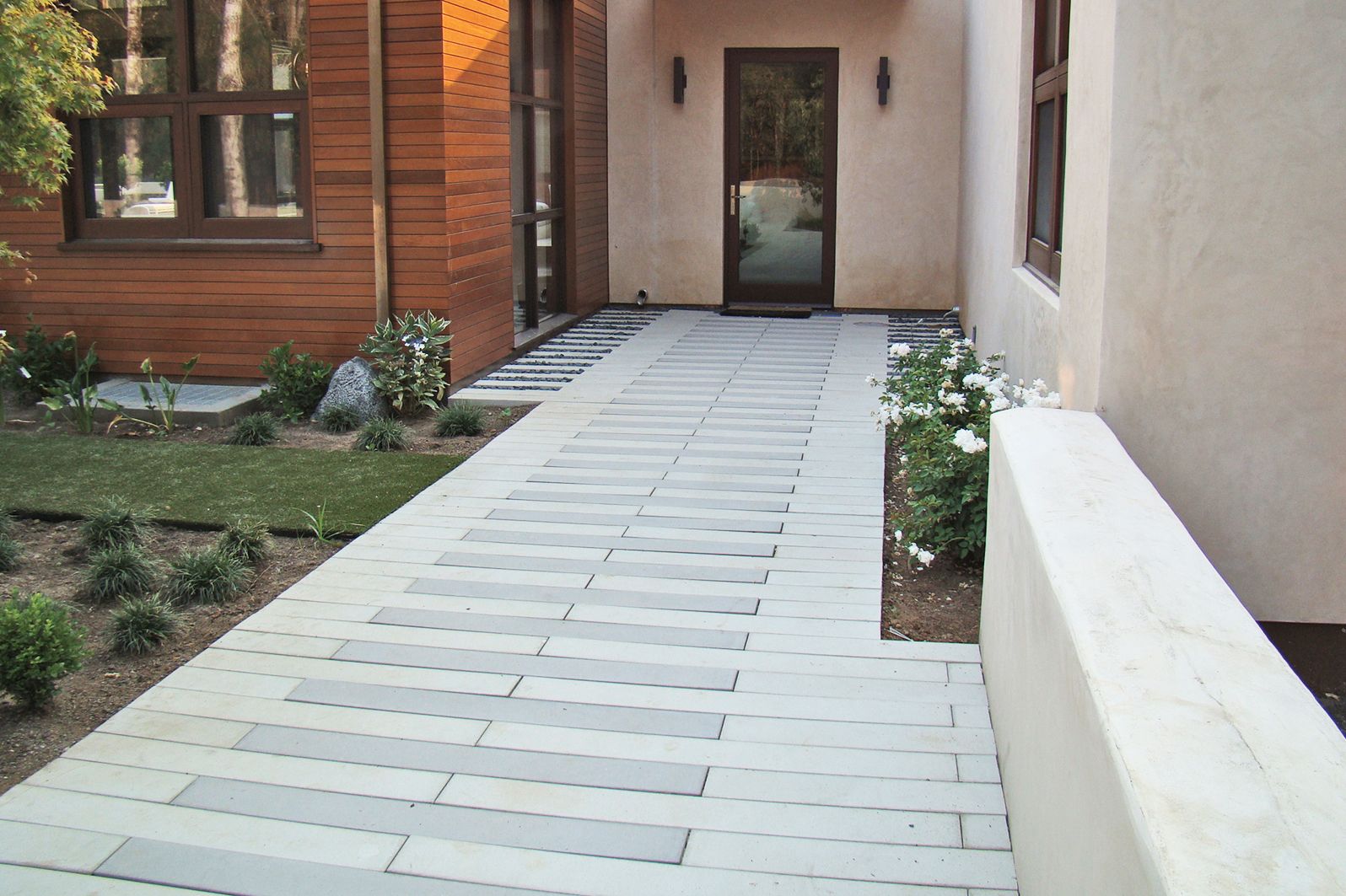
Sleek and minimalist concrete pavers can create a striking walkway for a contemporary home. Their smooth faces and crisp, precise edges make them easy to clean and maintain.
You’ll probably want to make a pattern with these pavers to make the design pop. The walking path shown here uses Granada white and porcelain-colored blocks to direct guests straight to the front door.
Choosing the Right Concrete Paver Style
To choose the right paver style for you, think about these factors:
- Architectural style: Choose a paver style that complements and builds on your home’s exterior design and curb appeal. The right style can draw attention to your favorite architectural elements and combine everything for a cohesive look.
- Functionality: Driveways require a different kind of paver than patios. Choose a paver with a good feature set for your space, such as slip resistance or added durability.
- Color and texture: Choose a color and texture that will complement the pavers’ surroundings. You want to draw equal attention to your paver path, home exterior, and surrounding landscaping.
- Pattern options: Some paver styles give you more flexibility when it comes to laying patterns, so you can let your creativity run wild. Unique pattern arrangements can help your home stand out and give it a personalized touch.
- Maintenance requirements: Think about how much time and effort you want to devote to maintaining the paved surfaces. Some designs require more upkeep than others.
Paver Installation Considerations
Here are some key considerations to keep in mind for proper installation:
- Site preparation: Make sure your site has proper grading and drainage to keep the pavers stable and prevent water damage in the future.
- Base material: Give your pavers a stable foundation with a suitable base material, and compact it thoroughly before laying your pattern. Shifting and settling can ruin a design over time.
- Foundation reinforcements: To make your pavers more stable, you can install edge restraints around the perimeter of your patio or path. Then, add polymeric sand between pavers to stabilize inside the pattern and stop weeds from growing through.
Maintenance and Care
To keep your concrete pavers looking their best for years to come, follow these maintenance tips:
- Regular cleaning: Sweep or blow debris off the paver surface regularly, and occasionally use a mild detergent and water to prevent dirt buildup.
- Sealing: Apply a quality sealer every few years to extend your pavers’ life span, protect them from stains, and help them keep their color over time.
- Repairs: If you see a loose or damaged paver, address it immediately to prevent further issues.
